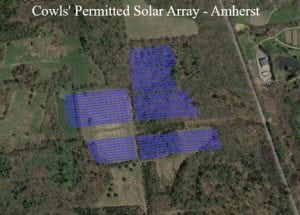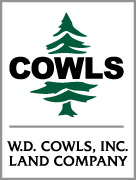Solar Opportunities
Sustainability for Generations Next
Through sustainable forest management; landscape level land conservation; community building; and green energy investments, Cowls’ resources are managed today to achieve a more sustainable tomorrow.
Cowls’ solar farms help reduce dependence on fossil fuels; make surrounding forests and rural communities more economically viable; provide towns with significant new income to pay for schools and libraries; and can improve towns’ Green Community Status.
From One Farm to Another : Cowls’ Solar Opportunity

W.D. Cowls is committed to doing our part to reduce dependence on imported fossil fuels while improving Massachusetts’ economy. We have an opportunity to support the Commonwealth’s clean energy goals by bringing solar energy production to our land and overseeing the responsible development by our partners.
As a steward of both conserved and working forestland, our company farms more acres than any other agricultural producer in the Commonwealth of Massachusetts. For nearly 300 years, we have done what we can with what we have, managing these vital resources with a constant eye toward the future.
Sustainable energy is critically important to our family business and our community. We take pride in making informed decisions about what is needed to fight climate change and ensure that our communities are strong for years to come, even when those decisions are the hard ones.
Sustainability for Generations Next
At Cowls, we manage our family business like our Tree Farms, growing what our community needs today, without jeopardizing future generations’ ability to do the same. Through sustainable forest management; large scale permanent land conservation projects; community building; and green energy investments, our resources are managed today to achieve a more sustainable tomorrow.
We understand there’s a critical balance between conservation and development. One enables the other. Solar farms improve surrounding forests’ and rural communities’ viability.
For more information about sustainability and solar in forests please see
https://www.bnl.gov/pv/files/pdf/229_rser_wildlife_2011.pdf
